‘Art changes people’s minds and people change the world.’ Shamsia Hassani
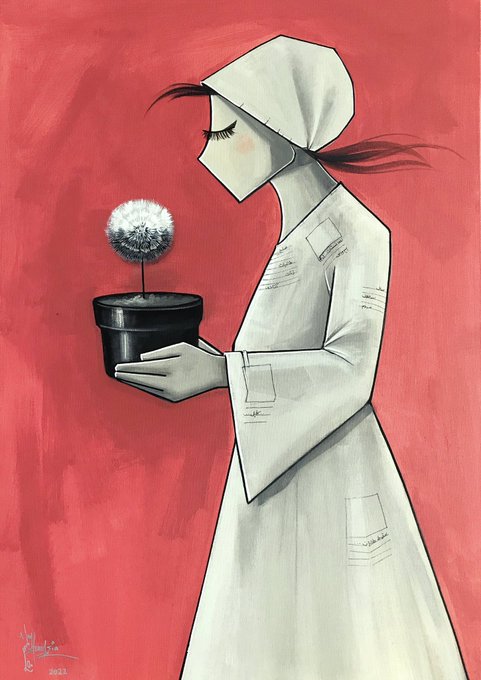
Shamsia Hassani is a ground-breaking female graffiti artist from Afghanistan. As her website explains: ‘Through her artworks, Shamsia portrays Afghan women in a male dominant society. Her art gives Afghan women a different face, a face with power, ambitions, and willingness to achieve goals. The woman character used in her artworks portrays a human being who is proud, loud, and can bring positive changes to people’s lives. During the last decade in Afghanistan, Shamsia’s works have brought in a huge wave of color and appreciation to all the women in the country. Her artworks have inspired thousands of women around the world and have given new hope to female Afghan artists in the country.’
Visualising peace with Shamsia Hassani
Shamsia Hassani’s art is strongly anti-war and it invites us to visualise a more peaceful future where women’s dreams, freedoms and voices can flourish. I wanted to feature her art in our museum to draw attention to the strong connections that many see between peace, social justice, gender equality and human rights.[i]Shamsia’s vision of peace is tightly bound up with women’s rights – but of course, it is not a peace that has arrived yet. It is a peace which she uses her art to advocate for, reminding us of the strong connections between art and activism (or ‘artivism’) and the power of imagination and visualisation to change the world for the better.[ii]
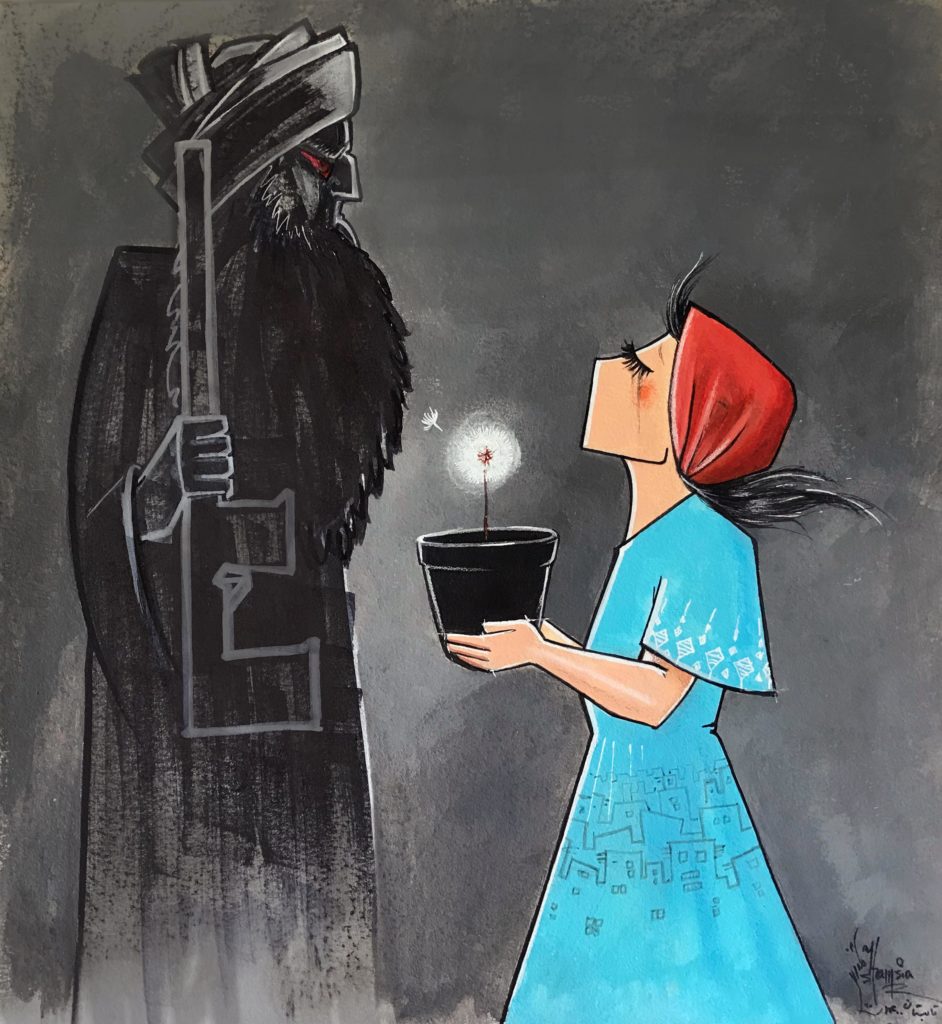
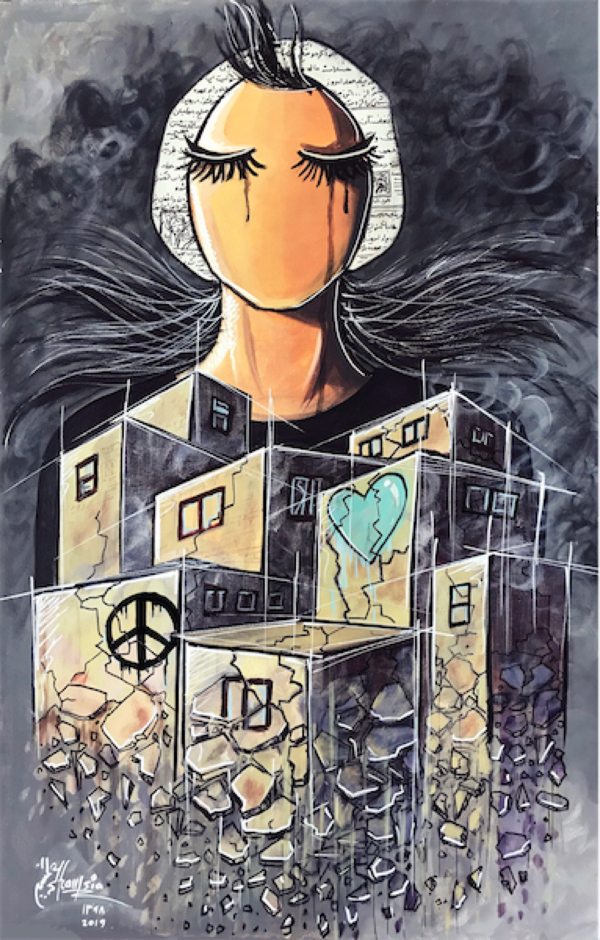
Shamsia’s paintings reflect both present and future, oppression and (potential) freedom, war and the possibility of a peace grounded in the gentle, beautiful aspirations of long-abused but resilient women. Many of her pictures contain recurring symbols: dandelion seed heads, paper boats, kites, swings, musical instruments, a ‘plant pot of wishes’. They shine brightly against an often dark backdrop; they fly high into the sky; they figure as acts of resistance against the forces of war and oppression. Their fragility is often underscored in Shamsia’s paintings, and they sometimes float or fly out of reach. But they keep hope alive, painting after painting.
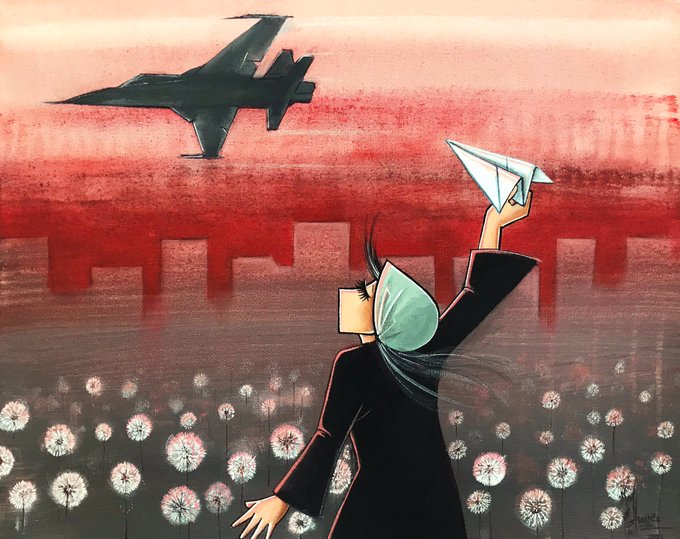
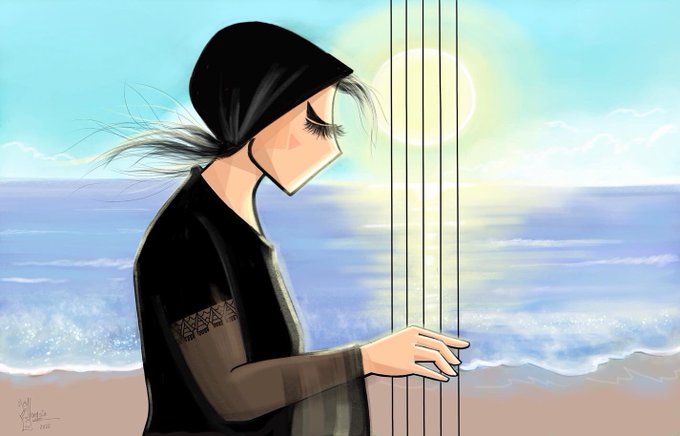
At the start of 2022, Shamsia released ‘A Blank Newspaper’, which depicts a woman holding her ‘pot of wishes’ while wearing a newspaper dress that has yet to be filled with stories. It was her way of welcoming in the new year: hope waiting to materialise into good news stories that we will want to read. Shamsia’s art is not merely wishful thinking and far-off dreams, though; it is a manifesto for change. At present, with the Taliban in power, she cannot paint murals on the streets of Kabul, so instead she has developed a practice which she calls ‘Dreaming Graffiti’. She blows up huge photographs of parts of the city or mountain landscapes and paints her graffiti on them. With this bit of ‘Dreaming Graffiti’ Shamsia has painted a colourful, vocal, empowered woman into the streets of her city, holding a guitar that clearly evokes the gun it has replaced. This is her vision of peace for Afghanistan.
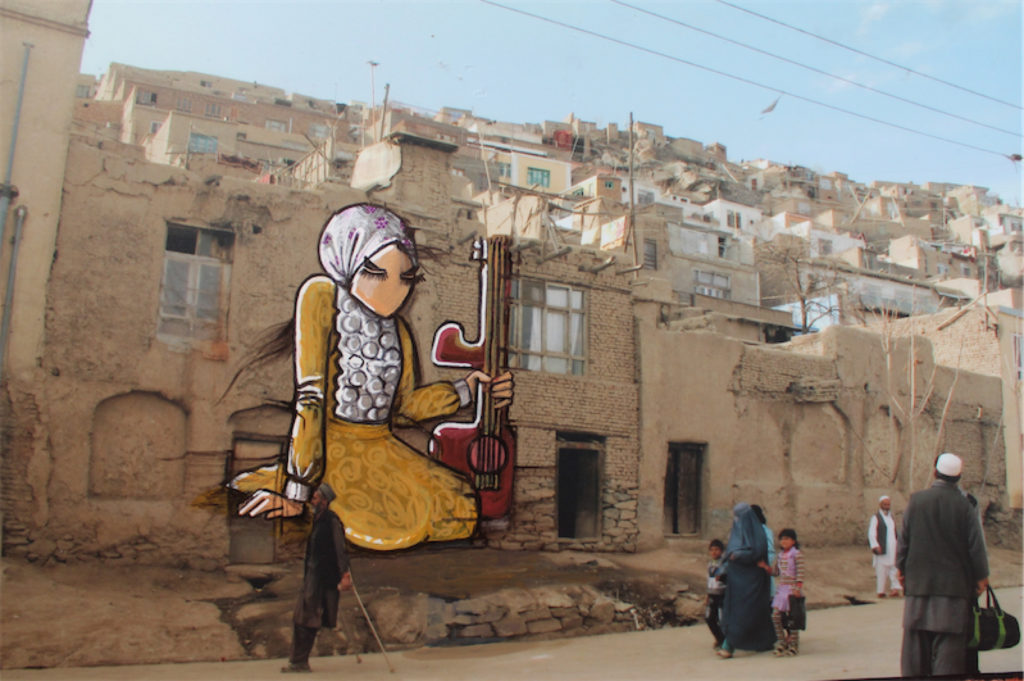
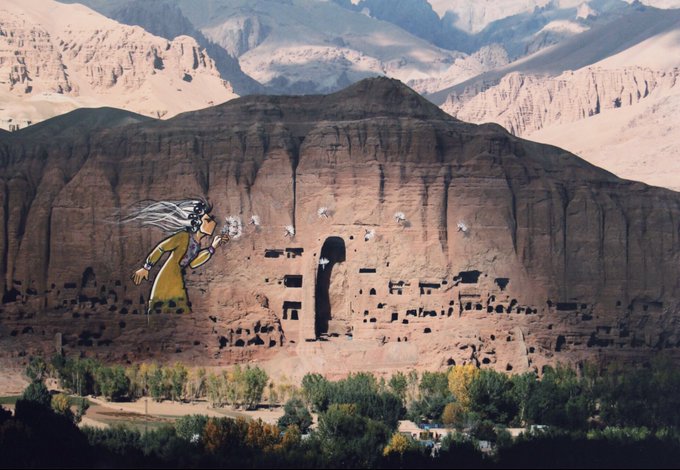
What do you think?
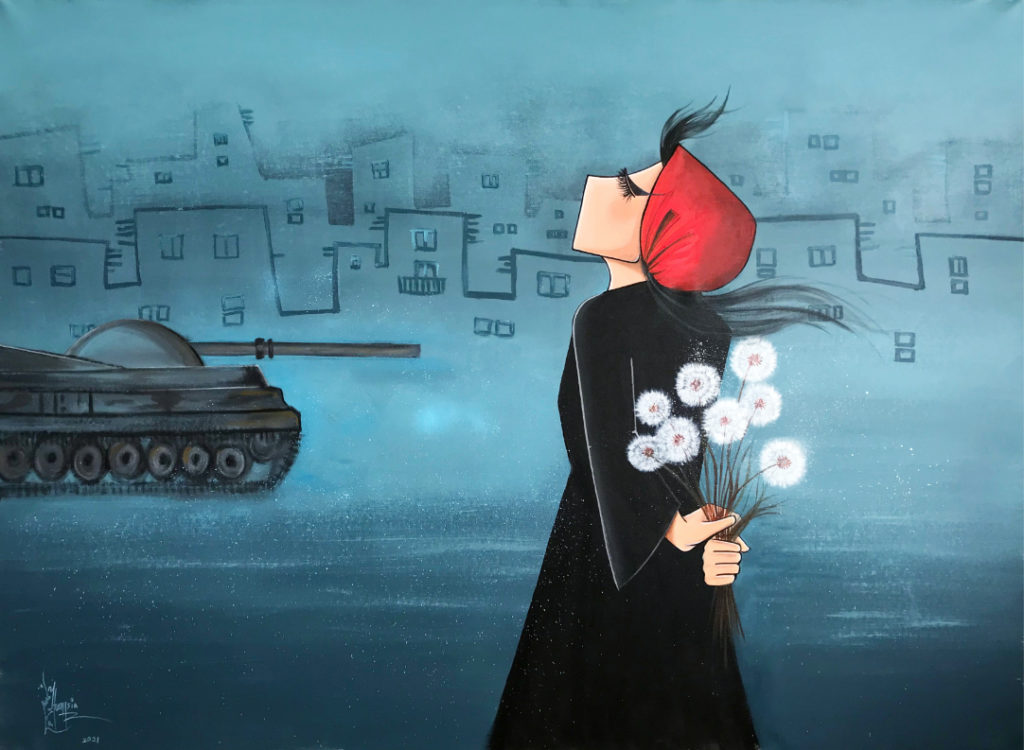
- When you look at Shamsia’s paintings, what visions of peace (if any) do you see?
- How hopeful or fragile does Shamsia Hassani’s vision of peace seem to you?
- What kinds of impact do you think art like Shamsia Hassani’s can have?
- Does Shamsia Hassani’s connection between peace and women’s rights require us to rethink what both peace and conflict look like?
If you enjoyed this item in our museum…
You might also like ‘Of Ordinary Things‘, ‘Pride: peace in social justice and the power of solidarity‘, ‘Colombia: the long road to peace‘ and other posts with the tag ‘artivism‘.
To find our more about Shamsia Hassani’s art and activism, you can visit her website. She shares her paintings on Instagram and Twitter, and she also has a YouTube channel where you can learn more about her work.
Alice König (April 2022)
[I] I am very grateful to Shamsia Hassani for granting us permission to feature her work in our Museum of Peace.
[ii] You can find some good examples of ‘artivism’ (activism via art) here and here. This podcast also explores the use of art to build peace in different parts of the world.